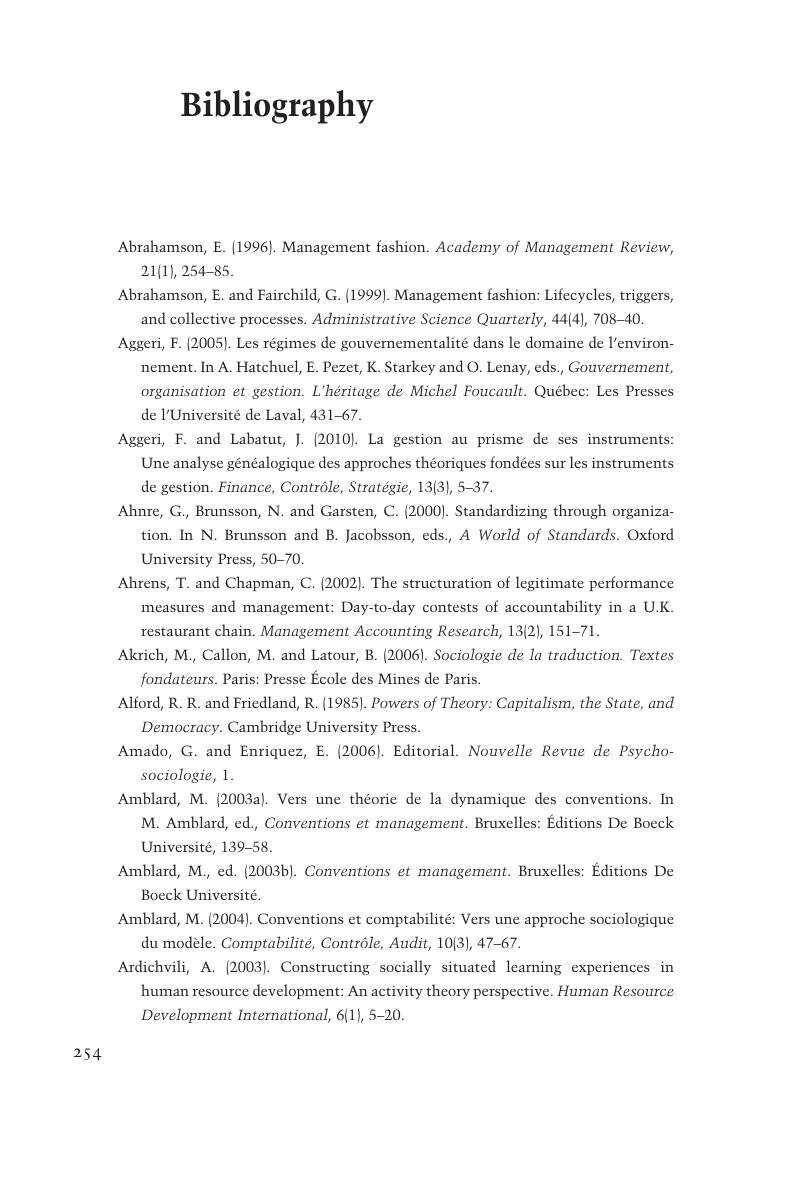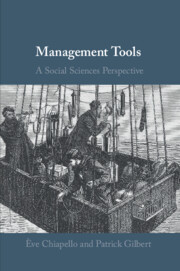Book contents
- Management Tools
- Management Tools
- Copyright page
- Contents
- Figures
- Tables
- Acknowledgements
- How to Use This Book
- Introduction
- Part I Theoretical Foundations for Thinking about Management Instrumentation
- Part II Three Major Types of Social Science Approaches
- Part III Synthesis
- General Conclusion
- Book part
- Bibliography
- Index
- References
Bibliography
Published online by Cambridge University Press: 31 July 2019
- Management Tools
- Management Tools
- Copyright page
- Contents
- Figures
- Tables
- Acknowledgements
- How to Use This Book
- Introduction
- Part I Theoretical Foundations for Thinking about Management Instrumentation
- Part II Three Major Types of Social Science Approaches
- Part III Synthesis
- General Conclusion
- Book part
- Bibliography
- Index
- References
Summary

- Type
- Chapter
- Information
- Management ToolsA Social Sciences Perspective, pp. 254 - 282Publisher: Cambridge University PressPrint publication year: 2019



